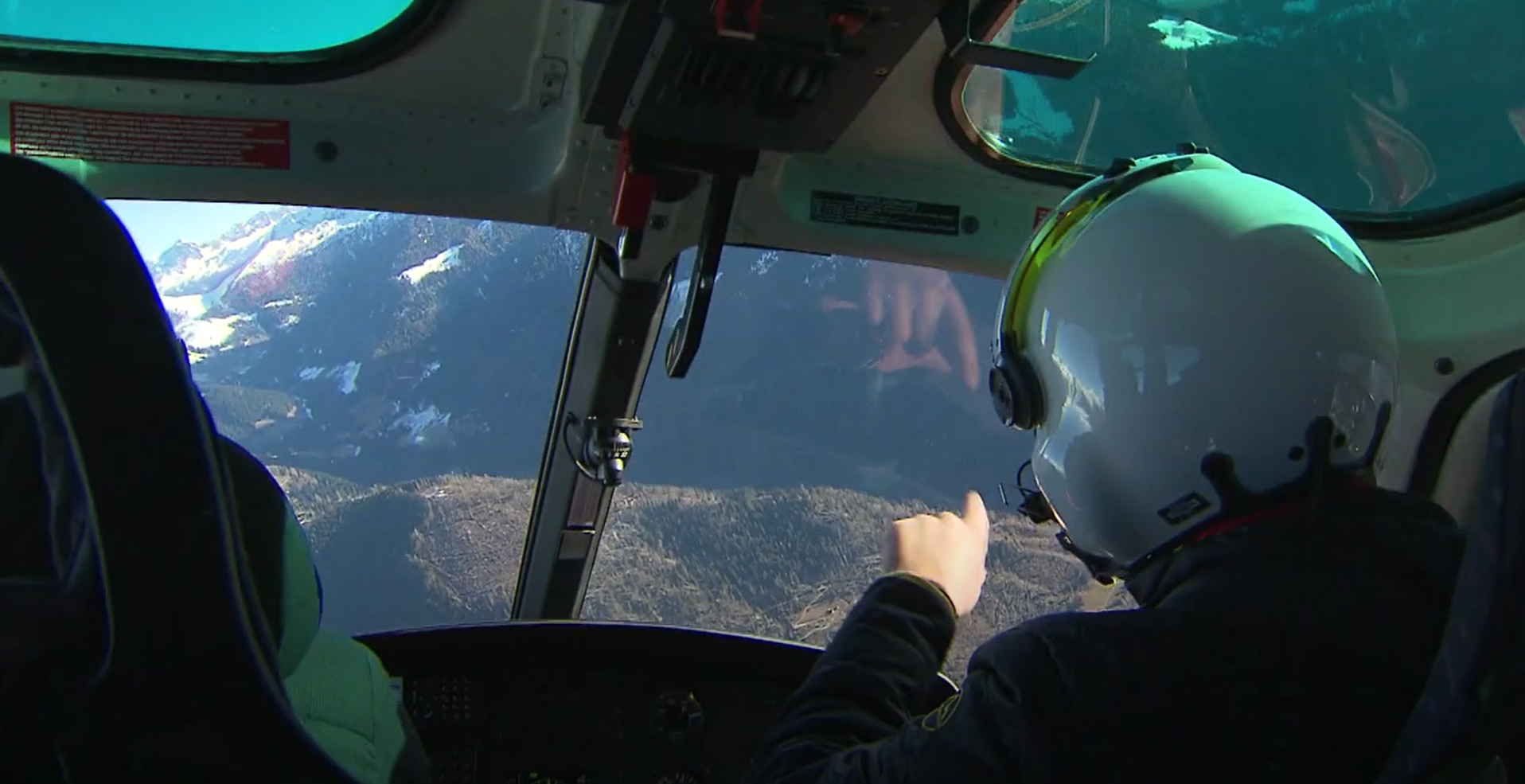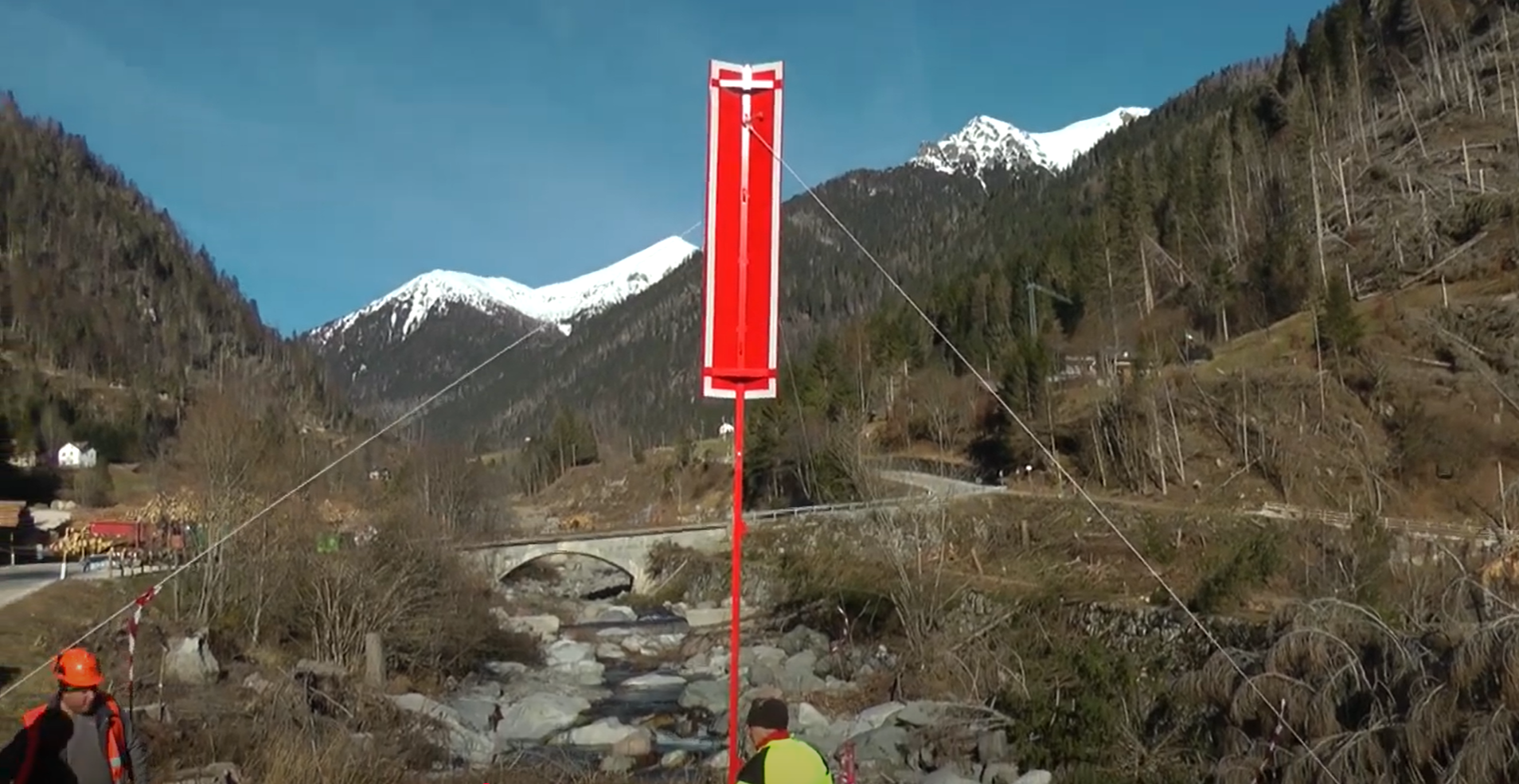“Hanging by a thread”, Preventing risks in low-altitude flight
Original title: "Appesi ad un filo", Prevenire i rischi a bassa quota
An initiative and video by the Autonomous Province of Trento, Italy
The Autonomous Province of Trento (Provincia Autonoma di Trento), Italy, has launched in 2018 an initiative aimed to increase the visibility of cables to avoid cable and obstacle collisions in low altitude operations.The initiative was promoted in the video below, released in 2020:

Video “Appesi ad un filo”, Prevenire i rischi nel volo a bassa quota (in Italian), Provincia Autonoma di Trento, Italy - YouTube
The topic of obstacles encountered in low-altitude flights such as power lines, antennas, cableways, and most recently slacklines, has been known for some time.
In the aftermath of the Vaia storm that hit the Trentino Region at the end of October 2018, this topic was revisited with new interest due to the increase in logging activities aimed to remove the broken or uprooted trees left by the storm. Transporting the wood to the valleys required installing mobile cableways, which are a threat for helicopters.
Starting from a discussion with all professionals involved, The Autonomous Province of Trento has issued an ordinance and guidelines on the obligation to visually signal these installations to protect notably the helicopters that can perform rescue operations in the logging areas.
NOTE: The hoisting operation by Protezione Civle shown in the first part of the video isn't compliant with EASA rules for civil operations. That isn't however the main subject of this video presenting an initiative intended to increase cables visibility.
Quotes from the video
What does it mean for a pilot to encounter during the flight, during the operational activity, a tight rope or an obstacle in flight?Marco Abbagnale, Pilot in Charge of Flight Safety, Helicopter Unit: "The greatest danger for us is that we do not see the cables from the helicopter. The cable against the backdrop of the mountain in the woods is invisible to us. This is the very difficult thing to understand for those who, on the ground, with the background of the sky, can see the cable very well. Unfortunately, for us, however, it is a considerable danger:"

Cables are barely visible from above
Can the consequences be serious?
"Absolutely yes. They can be dramatic, even. Unfortunately, the impact of the rotor or rotor blades on a cableway is destructive."
Low-altitude flights in the presence of obstacles such as cableways, which are difficult for pilots to spot, can therefore be very insidious.To increase the safety of those who intervene from the sky and of those rescued on the ground, a teamwork project was set up.
Mauro Odorozzi, Civil Protection Department: "To implement this provision,The Civil Protection Department has issued a guideline resulting from a joint work between the Forest Department, Civil Protection and the Helicopter Unit. With the cooperation and involvement of the logging companies, that would allow, in a simple and effective way, the creation of signaling devices visible day and night for the logging cableway systems."

Using eflective strips in vivid colours to signal obstacles
Therefore, anchors, pylons and trellises, ropes that cross open spaces outside the treetops and outside the woods were signaled, day and night. To signal obstacles, it was decided to use reflective strips and particularly visible colours such as yellow, red, orange and white.
Devices specifications and precautions to be taken are described in guidelines that can also be downloaded from the website of the Trentino Civil Protection: www.ptotezionecivile.tn.it.
ReferencesVideo “Appesi ad un filo”, Prevenire i rischi nel volo a bassa quota (in Italian), Provincia Autonoma di Trento, Italy“Appesi ad un filo”, prevenire i rischi nel volo a bassa quotaDet_DG_n._3_2019_testo_BUR.1578475520.pdfCan You See the Cables? | EASA CommunityCable Collisions | EASA CommunityThreat and Error Management (TEM) for Helicopter Operations | EASA Community
Please log in or sign up to comment.